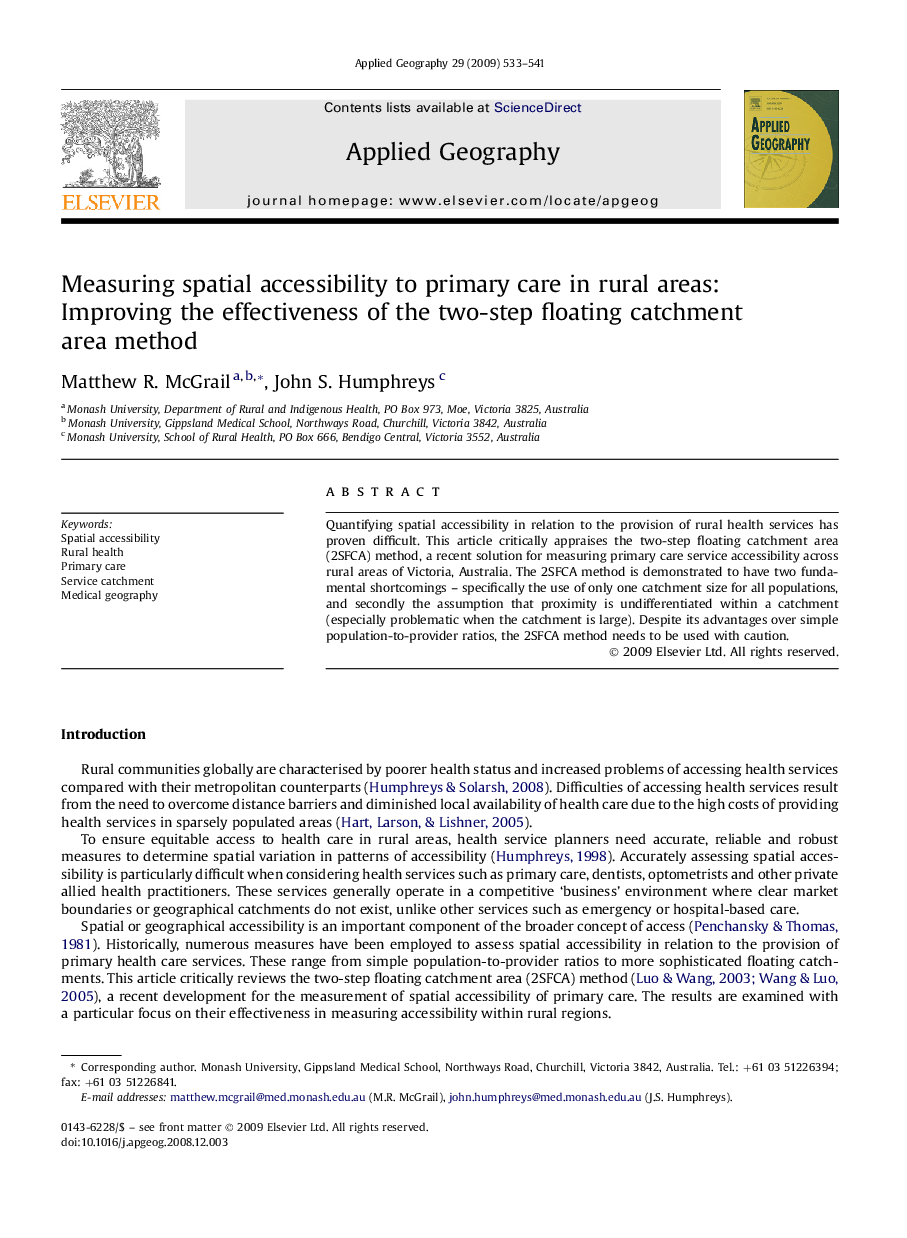| Article ID | Journal | Published Year | Pages | File Type |
|---|---|---|---|---|
| 83825 | Applied Geography | 2009 | 9 Pages |
Abstract
Quantifying spatial accessibility in relation to the provision of rural health services has proven difficult. This article critically appraises the two-step floating catchment area (2SFCA) method, a recent solution for measuring primary care service accessibility across rural areas of Victoria, Australia. The 2SFCA method is demonstrated to have two fundamental shortcomings – specifically the use of only one catchment size for all populations, and secondly the assumption that proximity is undifferentiated within a catchment (especially problematic when the catchment is large). Despite its advantages over simple population-to-provider ratios, the 2SFCA method needs to be used with caution.
Related Topics
Life Sciences
Agricultural and Biological Sciences
Forestry
Authors
Matthew R. McGrail, John S. Humphreys,
